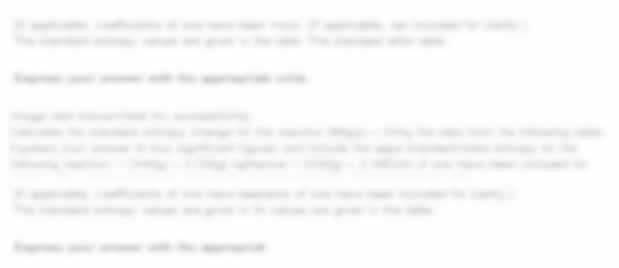/
Questions/
Assignment/
Derive and write the averaged model of the DC-DC Buck-Boost converter, as described in Figure: Intelligent Systems & Control Assignment, DMU, UK
Looking For Plagiarism Free Answers For Your UK College/ University Assignments.
BUY NOWDerive and write the averaged model of the DC-DC Buck-Boost converter, as described in Figure: Intelligent Systems & Control Assignment, DMU, UK
| University | De Montfort University (DMU) |
|---|---|
| Subject | Intelligent Systems & Control |
Questions:
Part A:
- Derive and write the averaged model of the DC-DC Buck-Boost converter, as described in Figure. Consider as the measured output of the system the output voltage, equivalently, the voltage of the capacitor C).

- Linearise the model around the equilibrium point xeq=[20 0.4]T and derive the linearised state space representation.
- Provide several simulations of the averaged, nonlinear model and the linearised model you have acquired from questions 1 and 2 around the equilibrium point. Start by having as the initial condition the equilibrium point, and gradually use initial conditions that are farther away from it. You can use as constant input the input vector corresponding to the equilibrium point. Plot the time responses of the states for the two models against each other. Also, plot the trajectories of each model in the state space. Observe and report the differences, if any.
- Assuming a zero-order-hold discretization scheme, derive the discretized system from the linearised system, for a sampling period T=10μsecs. Compare the discretized version with the continuous-time system in a simulation, where the discretized system and the continuous-time linearised system are plots in the same figure.
- Compare also the state coming from the discrete approximation using Euler forward difference acting on the nonlinear system, i.e., by setting

Part B:
- Is the linearised continuous system controllable?
- Using the continuous-time linearised model, develop a stabilizing state space control law that drives the system to the equilibrium point. The closed-loop system must have a damping factor ζ=0.86 and a damped natural frequency ωd=2000.
- Simulate the open-loop linearised system and the closed-loop linearised system, and the closed-loop averaged system, for two initial conditions and observe/highlight the differences in the responses. Justify your choice of initial conditions.
Part C:
- The inductor current iL cannot be measured accurately without an expensive sensor. Thus, the controller designed in Part B cannot be implemented without an additional cost. To avoid this, we can develop an observer that estimates both states of the linearised system. Choose the eigenvalues of the closed-loop error dynamics of the observer and justify your decision.
- Write down the complete observer equation, that is the closed-loop error dynamics and the state estimate dynamics.
Part D:
- Consider the controller designed in Part B, which uses the state estimation instead of the actual states, as designed in Part C. Derive the resulting closed-loop system and write down the state equations and output equations. Is the resulting closed-loop system stable and why?
- Simulate two closed-loop systems with the controller designed in Part B by (i) taking the actual state as feedback and (ii) taking the state estimation as feedback. Observe differences if any.
Do You Need Assignment of This Question
Get help by expert
UK students, are you struggling with your coursework at De Montfort University (DMU)? Don’t worry, we’re here to provide expert assistance! Our team offers reliable assignment writing help tailored specifically for you. Dive into the intriguing subject of Intelligent Systems & Control and derive the averaged model of the DC-DC Buck-Boost converter as described in the figure. Pay our experts and witness remarkable improvement in your grades. Trust our professional report writing help service and excel in your academic journey!
Recent solved questions
- ILM: Assess own leadership behaviours and potential in the context of a particular leadership model and own organisation's working practices and culture: Leadership skills and development, Assignment, UOA, UK
- ILM: Describe the factors that will influence the choice of leadership styles or behaviours in workplace situations: Leadership skills and development, Assignment, UOA, UK
- ATHE Level 7 Unit 5 : You Have Been A Senior Manager For Several Years And Have Decided That Your Next Career Move Should Be To Take Responsibility: Personal Development for Leadership and Strategic Management Assignment, UK
- You are required to prepare a 5-year strategy review to shareholders for evaluating the business simulation: 5-year strategy review to shareholders, Report, UOEL, UK
- CMI Unit 502: Approaches to achieving a balance of skills and experience in a team: Principles of Developing, Managing and Leading Individuals and Teams, Assignment, UK
- CMI Unit 502: Principles of Developing, Managing and Leading Individuals and Teams, Assignment, UK
- UNIT-701: How the principles of strategic leadership can be applied to respond to complex organisational challenges: Strategic Leadership, Assignment, CMI, UK
- UNIT- 701: The leadership behaviours and skills required to deliver strategic goals: Strategic Leadership, Assignment, CMI, UK
- UNIT- 701: Understanding of how the organisational context influences management and leadership practice: Strategic Leadership, Assignment, CMI, UK
- Evaluate the concept of evidence-based practice and assess how approaches to evidence-based practice: Evidence - based practices, Report, UOH, UK

